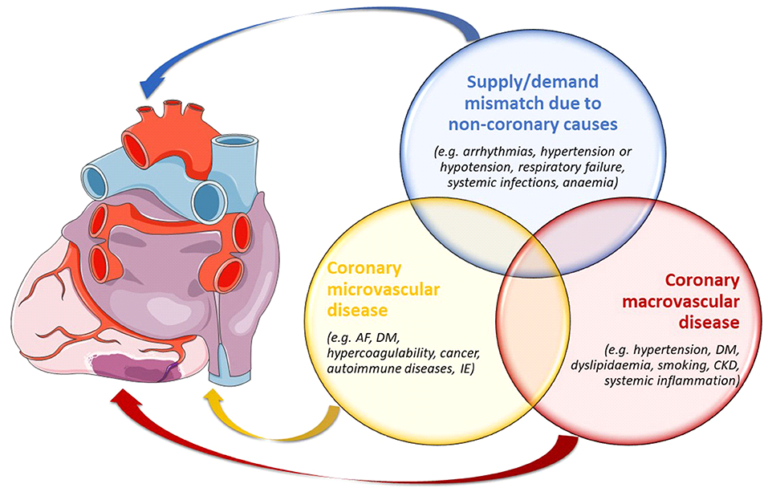Non-obstructive Coronary Artery Disease

What is non-obstructive coronary artery disease?
Nonobstructive coronary artery disease is atherosclertoic plaque that would not be expected to obstruct blood flow. Nonobstructive coronary artery disease occurs when the coronary arteries have a plaque buildup but remain unblocked.
What are the causes of non-obstructive coronary artery disease?
Non-obstructive CAD can present in several forms it has various potential causes:
- Diabetes
- High blood pressure
- Being overweight
- Smoking
- High cholestrol
What is coronary artery disease? (CAD)
Coronary artery disease (CAD) is the most comon type of heart disease. It is also called ischemic heart disease. CAD is a narrowing or blockage of the your coronary arteries, which supply rich oxygen blood to your heart.

Coronary artery disease types
There are two main forms of coronary artery disease:
Stable ischemic heart disease:
Its a chronic form. Your coronary arteries gradually narrow over years, over time. Your heart receives less rih oxygen blood.
Acute coronary syndrome:
Acute coronary syndrome is a term that describes a range of conditions related to sudden, reduced blood flow to the heart. These conditions include a heart attack and unstable angina. A heart attack happens when cell death damages or destroys heart tissue.
Symptoms of CAD:
Chest Pain (Angina):
This is the most typical symptom of CAD. Angina may feel like pressure, tightness, squeezing, or aching in the chest. It can also radiate to the shoulders, arms, neck, jaw, or back. Angina often occurs during physical exertion or emotional stress and is relieved by rest or medications.
Shortness of Breath:
Difficulty breathing or shortness of breath, especially during physical activity or when lying flat, can be a symptom of CAD. This may occur due to reduced blood flow to the heart muscle or fluid buildup in the lungs (congestive heart failure).
Fatigue:
Unexplained fatigue or weakness, especially if it occurs with other symptoms such as chest pain or shortness of breath, may be a sign of reduced blood flow to the heart.
Heart Palpitations:
Sensations of irregular or rapid heartbeats (palpitations) may occur in some people with CAD, particularly if they have an arrhythmia (abnormal heart rhythm).
Dizziness or Lightheadedness:
Feeling dizzy or lightheaded, especially when standing up suddenly, may occur due to reduced blood flow to the brain caused by CAD.
Nausea or Indigestion:
Some people with CAD may experience symptoms such as nausea, indigestion, or abdominal discomfort, particularly in women or those with atypical presentations of heart disease.
Jaw Pain or Toothache:
Unexplained pain in the jaw, neck, or upper back, sometimes mistaken for a toothache, may be a symptom of CAD, especially in women.
How is coronary artery disease treated?
Coranary artery disease treatment often includes lifestyle changes and medications. Some people may also need a procedure of surgery.
Lifestyle changes:
Lifestyle changes play a big role in treating coronary artery disease.
- Eat healthy foods low in sodium, saturated fat, trans fat and sugar.
- Dont smoke, vape or any other tobacco
- Limit alcohol
- Excercise
Medications:
Medications can help you manage your risk factors and treat symptoms of coronary artery disease.
- Lower your blood pressure
- Lower your cholestrol
- Reduce your risks of blood clots
What are the stages of coronary artery disease?
Coronary artery disease (CAD) typically progresses through various stages, ranging from early asymptomatic plaque formation to advanced disease with significant obstruction of blood flow to the heart. The stages of CAD may include:
- Asymptomatic Atherosclerosis
- Angina Pectoris
- Acute Coronary Syndrome
- Chronic Total Occlusion
- Heart Failure
- Sudden Cardiac Death
What is minoca?
Myocardial infarction with non-obstructive coronary arteries (MINOCA) is a condition with different causes, characterized by clinical evidence of myocardial infarction (MI) and angiographically normal or minimally obstructive (≤50% stenosis) coronary arteries.





